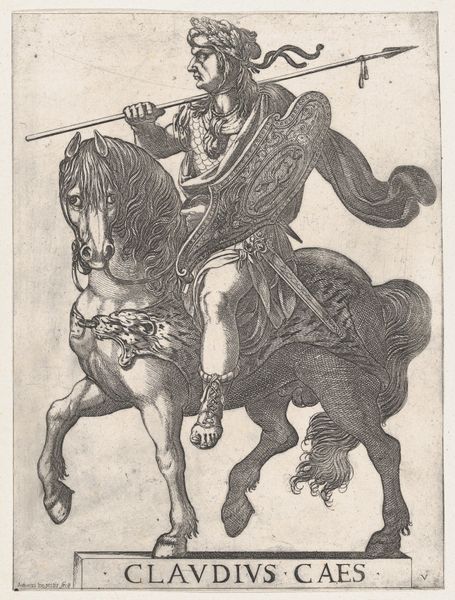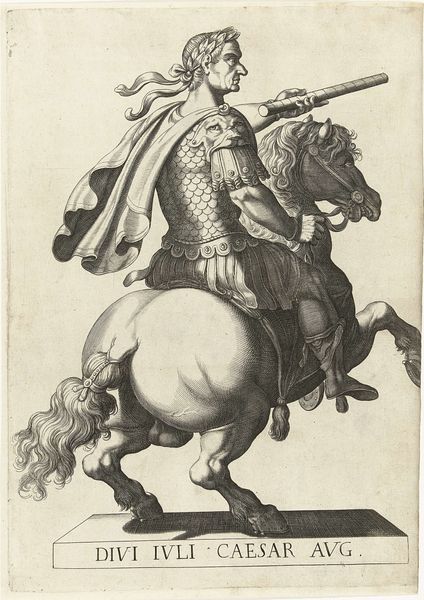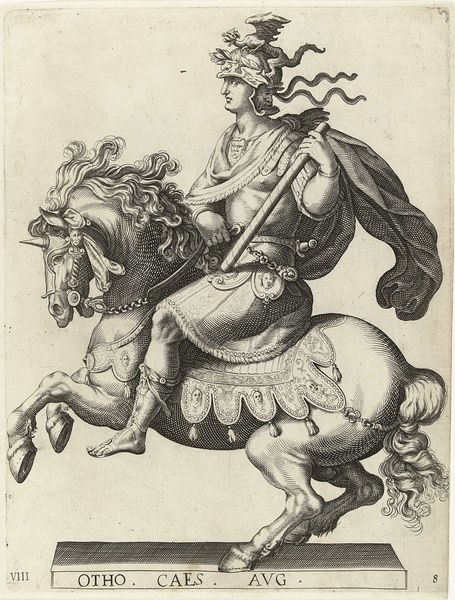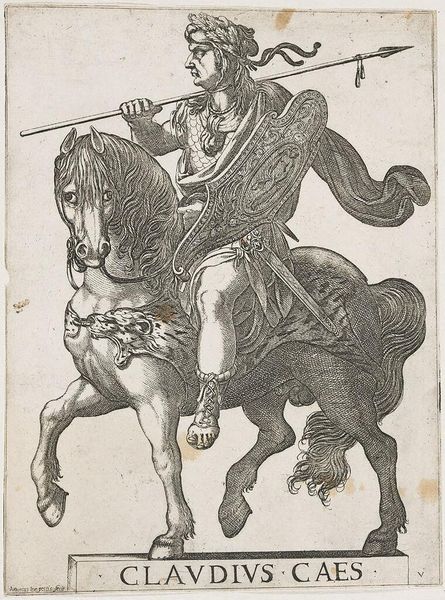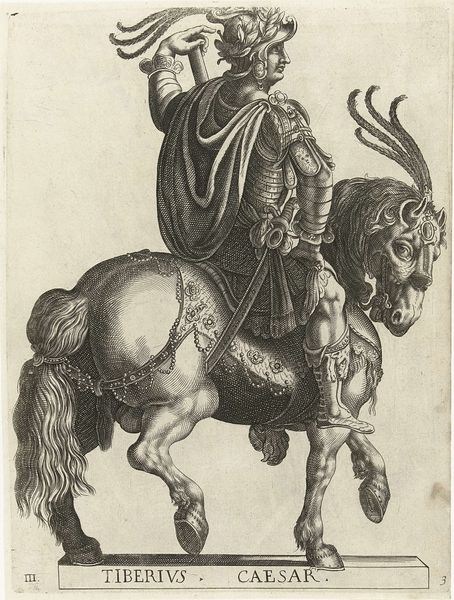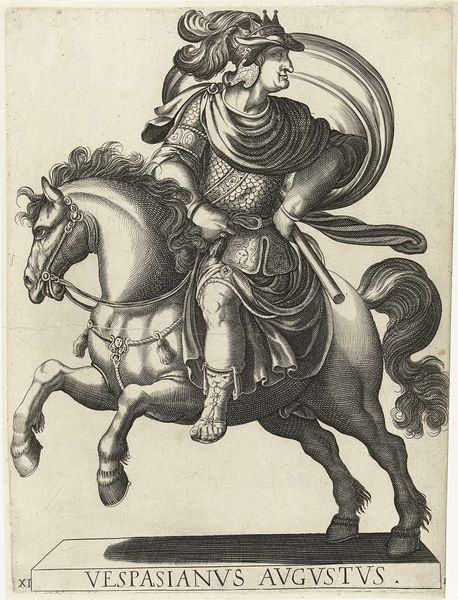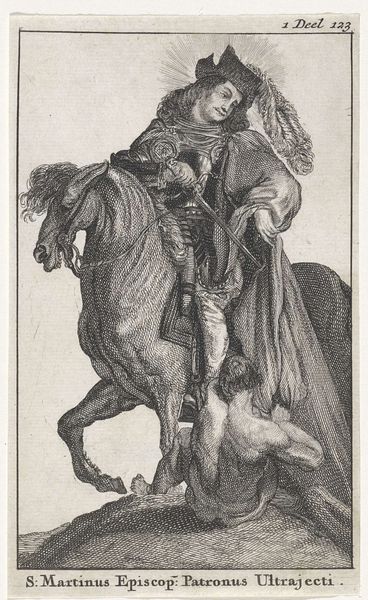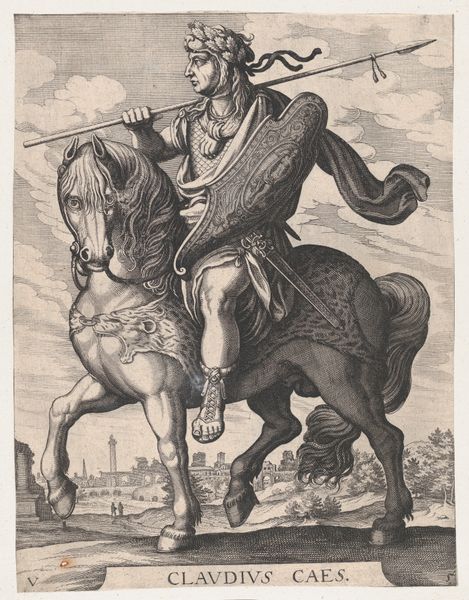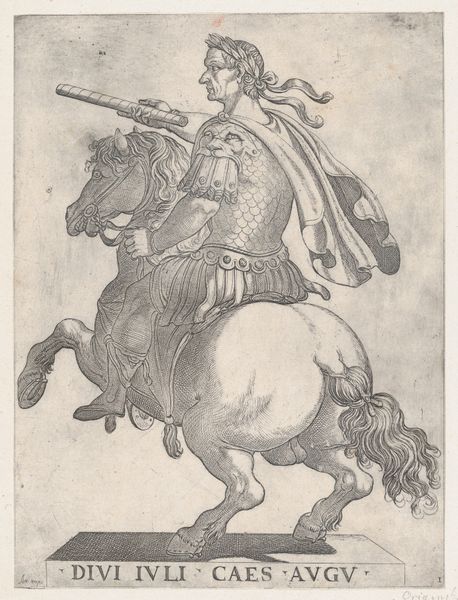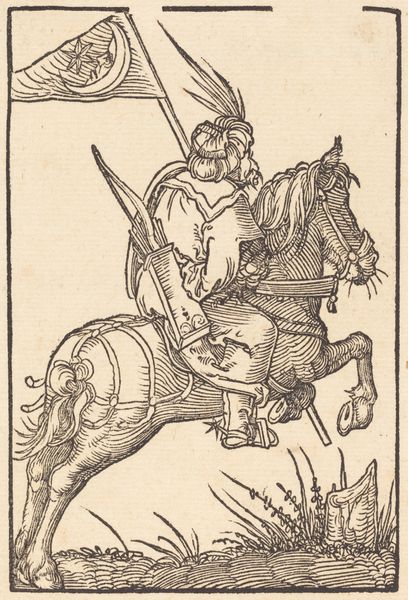
print, engraving
#
portrait
#
baroque
# print
#
history-painting
#
academic-art
#
engraving
#
erotic-art
Dimensions: height 312 mm, width 210 mm
Copyright: Rijks Museum: Open Domain
Curator: Laurens Eillarts created this print, entitled “Ruiterportret van keizer Claudius”, sometime between 1616 and 1620. Editor: There’s something incredibly striking about its graphic nature, almost like an incredibly detailed illustration. The sharp lines create a very powerful presence, especially when showcasing such a stoic portrait. Curator: Indeed. Eillarts, clearly schooled in academic traditions, leverages the engraving medium to meticulously define every contour of Claudius, from his laurel wreath to the detailed ornamentation of his horse’s trappings. The formal pose and attire project an image of immutable authority, perfectly capturing the ideals of baroque portraiture. Editor: But there is so much implied labour here, isn't there? Each line of that armour, the texture of the horse's mane... someone sat and meticulously etched all of this. It makes you wonder about the division of labour in his studio. Were there assistants? What kind of tools were used? And how was this print circulated? Was it purely for artistic appreciation or something else entirely? Curator: A sharp point. Focusing on the material process reveals the print's nature as both art object and functional item within a visual culture that utilized reproducibility. Its purpose could have varied, perhaps meant to disseminate an image of power or celebrate antiquity, each intention impacting how its physical components—paper, ink, technique—were valued. Semiotically, the medium affects our reading of Claudius too. Editor: Absolutely. Consider how the print’s dissemination differs from an oil painting hanging in a noble collection. These were designed for a wider circulation that democratized art, transforming viewership itself through new, widespread, media. The textures also carry a unique hand-wrought signature, speaking volumes on Baroque visual economies, even at imperial command. Curator: Your interpretation is truly generative! By seeing this work as an output of specific systems, we highlight a crucial point about its endurance: Its materiality shaped its message then, just as much as it continues to now, and our present analysis becomes intertwined with Eillarts' initial vision. Editor: I'm fascinated about how the historical making of this image and current experience shapes and underscores value and meaning to us today. Thank you.
Comments
No comments
Be the first to comment and join the conversation on the ultimate creative platform.
